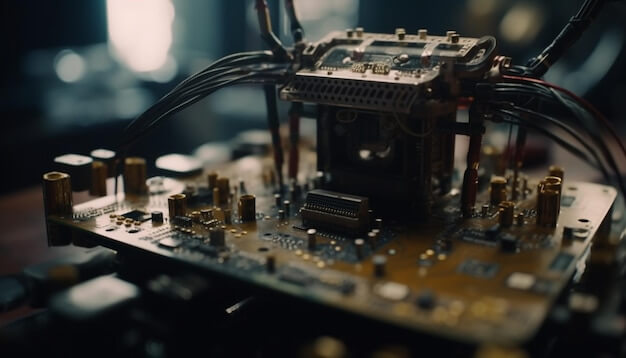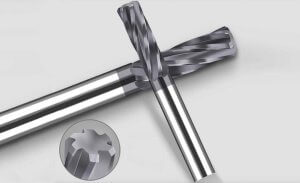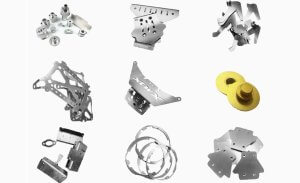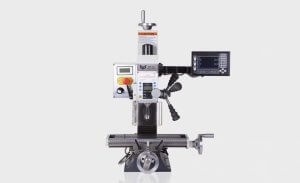CNC Machining and Transparent Components
Computer Numerical Control (CNC) machining is a manufacturing process in which pre-programmed computer software directs the motion of factory machinery and tools to create precision components. This technique can be used to manipulate a variety of materials, including metals, foams, plastics, and even transparent compounds, such as acrylic and polycarbonate.
The application of transparent components in CNC machining enhances aesthetic values while ensuring functionality. They are primarily used in applications where visibility or monitorability of an internal operation is critical, for instance, fluid flow systems, security shields in machines and devices with light-emitting parts.
- Acrylic offers clarity and brilliance like glass but with exceptional resistance against weathering and aging.
- Polycarbonate, on the other hand, boasts impressive impact resistance and longevity, making it ideal for robust builds that require transparency.
Each material presents its unique advantages in different manufacturing scenarios, providing manufacturers with versatile options when developing transparent components via CNC machining.
The Importance of Material Selection for Transparent Components
Material choice is a crucial aspect when it comes to CNC Machining for the production of transparent components. The characteristics and performance of the final product are greatly influenced by the type of material selected at this stage. Specifically, each material has unique machining qualities that affect aspects such as strength, clarity, durability, ease of use, and even cost.
Taking acrylic and polycarbonate as examples, selecting polycarbonate might be ideal for an application requiring high impact resistance while acrylic may be chosen for superior transparency and polishability. Missteps in material selection can cause several issues:
- Poor Performance: Using inappropriate materials could lead to a component that does not meet the required specifications or fails prematurely under operating conditions.
- Increased Costs: Some materials may require specialized tools or extended processing times, leading to increased manufacturing costs. Moreover, premature failure necessitates replacement parts, adding further to expenses.
- Reduced Quality: The use of improper materials negatively impacts the optical quality of manufactured parts – they may appear cloudy, include blemishes, or have poor surface finish.
Hence, understanding and properly implementing material choices during the CNC machining process is key to achieving optimal results in producing transparent components.
Comparing Acrylic and Polycarbonate in CNC Machining
When comparing acrylic and polycarbonate for CNC machining of transparent components, it’s important to consider their specific advantages and applications:
- Advantages of Acrylic:
- Good rigidity and optical clarity
- High degree of durability and scratch resistance
- Used in industries requiring optical properties and see-through surfaces
- Advantages of Polycarbonate:
- Highly transparent with good heat resistance
- Used in safety glasses, automotive parts, and medical devices
- Offers natural transparency and high tensile strength
Comparing CNC Machining with Acrylic vs. Polycarbonate
When it comes to durability, both acrylic and polycarbonate have their own unique strengths and weaknesses for CNC machining applications. For instance, polycarbonate generally withstands higher impact than acrylic, making it more suitable for components that are expected to sustain heavy force or shock. A perfect example of this is the use of polycarbonate in creating bullet-resistant glass where its strength plays a pivotal role. On the other hand, acrylic tends to be easier to work with due to its predictability during the machining process.
Critical evaluation of cost-effectiveness often favors polycarbonate as well despite its higher price point compared to acrylic. This is mainly because, when considering the element of durability, fewer replacements would mean reduced long-term costs. In a case study comparing the overall expenditure on indoor signage materials, businesses reported lesser expenses over time with polycarbonate as fewer replacements were needed unlike with the easily scratched and damaged acrylic.
- Pristine clarity and appealing aesthetics are attributes highly valued in transparent components, especially if they serve visual purposes like display cases or aquarium tanks. Here, acrylic usually wins hands down due to its transparency rating of over 90%, noticeably higher than that of polycarbonate. Furthermore, machined acrylic surfaces exhibit better gloss finish outstandingly enhancing their aesthetic appeal. Visual examples can be found in high-end retail displays made from acrylic which demonstrate superior shine and optical clarity compared to those made from polycarbonate.
Utilization Recommendations for Acrylic and Polycarbonate in CNC Machining
In the world of CNC machining, choosing between acrylic and polycarbonate when crafting transparent components relies on understanding their unique properties and recommended usage scenarios. For instance, an ideal situation for deploying acrylic is when a project requires high optical clarity and aesthetic appeal since it provides better light transmission and surface hardness than polycarbonate materials. Moreover, acrylic’s reduced cost and easy machinability make it suitable for applications such as retail displays, framing art or photographs.
- Applications: Retail Displays, Signage, Art Frames.
- Advantages: Superior Optical Clarity, Aesthetic Appeal, Cost-effective, Easily Machineable.
On the other hand, polycarbonate comes into play under different conditions – chiefly when strength, durability, and impact resistance are crucial to the project. It outperforms acrylic in areas like load-bearing capacity and toughness, making it preferred for use in rugged environments such as industrial machinery guards or security windows which are prone to significant mechanical stress.
- Applications: Industrial Machinery Guards, Security Windows, Bulletproof Glass.
- Advantages: High Strength, Durability, Impact Resistance.
Other Articles You Might Enjoy
- The Role of Bead Blasting in CNC Machining (bead blasting Steward)
Bead blasting is a commonplace aspect of numerous manufacturing procedures, including Computer Numerical Control (CNC) machining. Whether it's to enhance the external aesthetics or improve internal functionalities, bead blasting plays…
- Custom CNC Machining for Industrial Automation Solutions
Introduction to Custom CNC Machining and Industrial Automation Solutions Custom Computer Numerical Control (CNC) machining is a precision-manufacturing process in which pre-programmed computer software dictates the movements of factory machinery…
- Navigating the Challenges of Bead Blasting Techniques in CNC Machined Bearing Housings
The Complexity of CNC Machined Bearing Housings The manufacturing of CNC machined bearing housings involves intricate processes that demand high precision and meticulous attention to detail. These components are critical…








